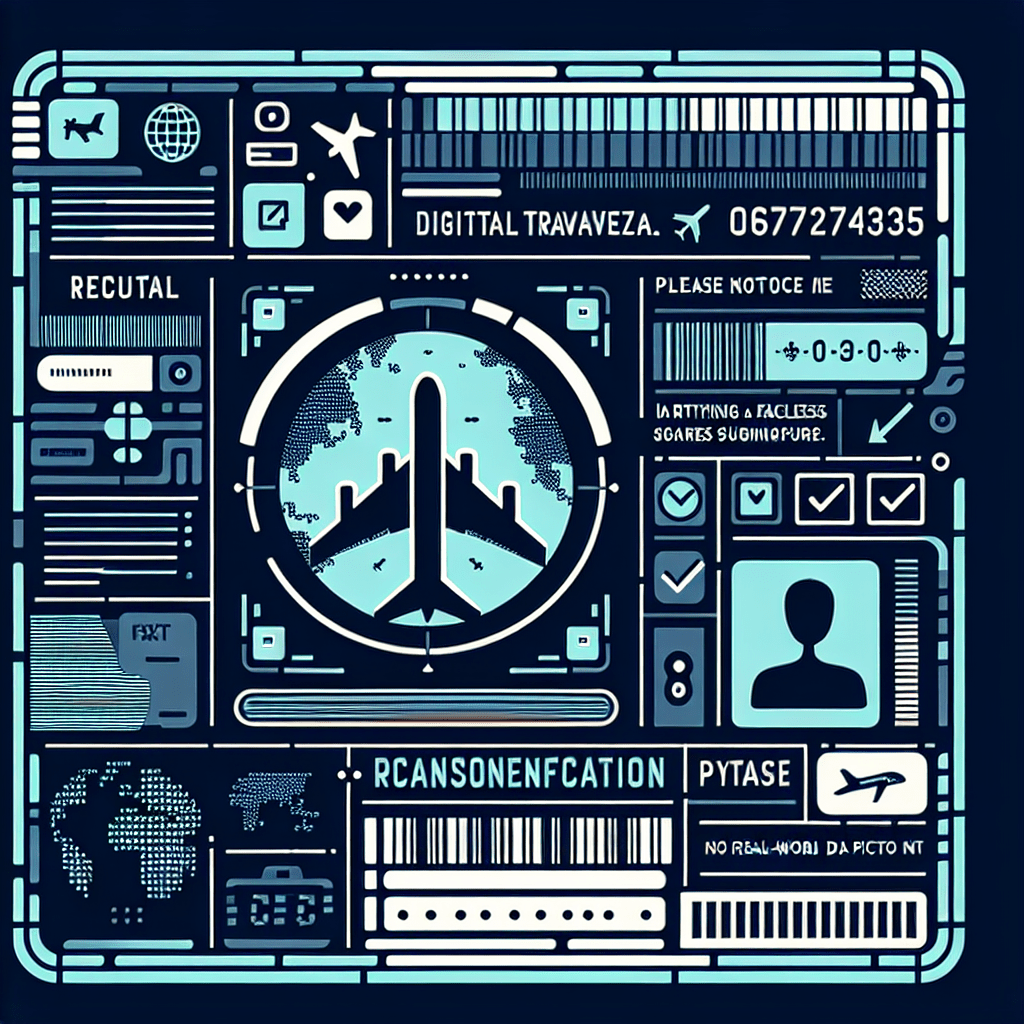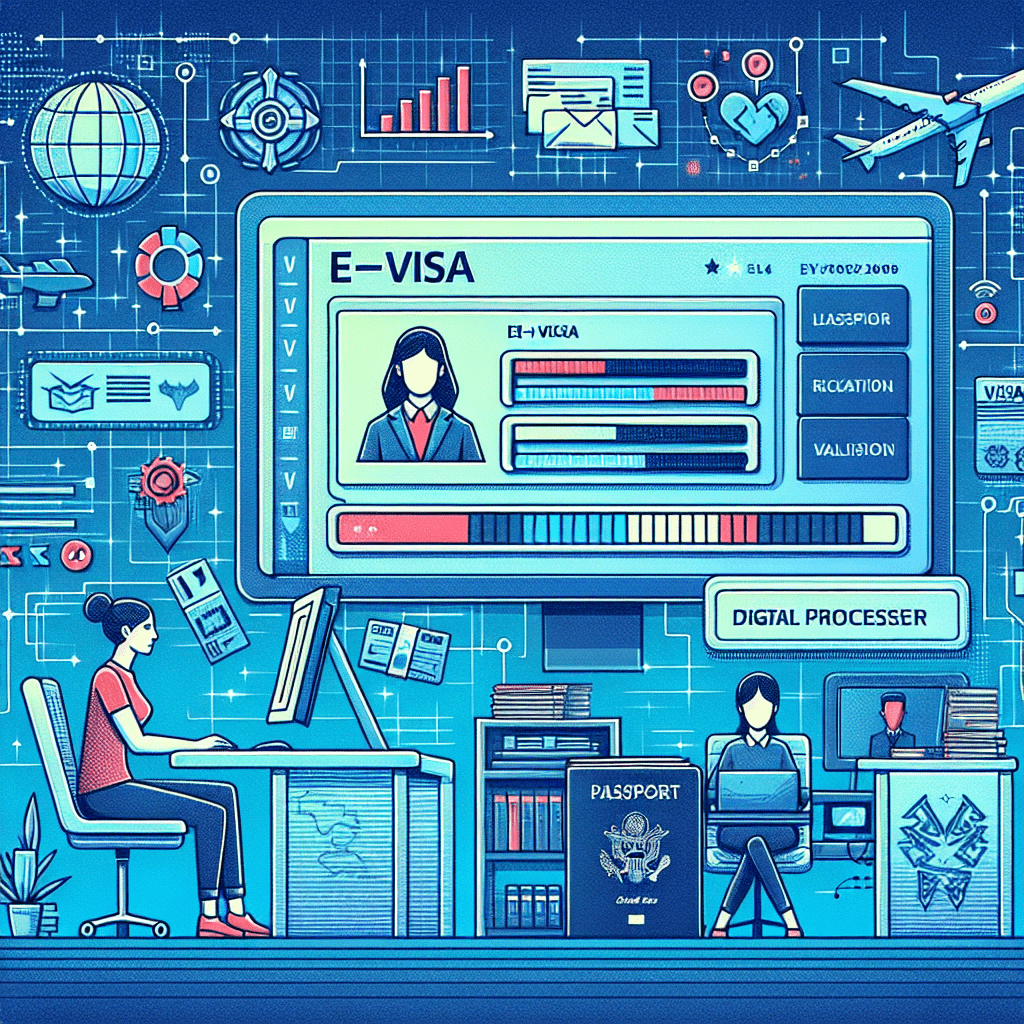7 Trends in Electronic Visa Adoption Worldwide

As the world becomes increasingly interconnected, the demand for efficient and streamlined travel processes has never been higher. Electronic visas, or e-visas, have emerged as a pivotal solution in modernizing international travel and enhancing global mobility. These digital travel authorizations offer a convenient alternative to traditional visa processes, allowing travelers to apply for and receive their visas online. The rise of electronic visas is not just a technological advancement; it represents a significant shift in how countries manage border security and facilitate tourism and business travel.
The importance of electronic visas in today’s travel landscape cannot be overstated. They provide a seamless experience for travelers, reduce administrative burdens for governments, and enhance security measures by leveraging digital technologies. As more countries adopt e-visa systems, understanding the trends driving this adoption becomes crucial for policymakers, travel industry stakeholders, and global travelers alike. This essay delves into the major trends shaping the adoption of electronic visas worldwide, offering insights into how these trends are transforming international travel and what they mean for the future of global mobility.
For more information on electronic visas, visit our electronic visa page.

Technological Advancements and Integration
Development in Digital Infrastructure Supporting E-Visa Systems
The rapid advancement of digital infrastructure has been a cornerstone in the widespread adoption of electronic visas. Countries around the globe are investing in robust digital frameworks to support the seamless operation of e-visa systems. Enhanced cybersecurity measures are at the forefront of these developments, ensuring that sensitive personal data is protected against potential threats. Governments are implementing state-of-the-art encryption technologies and multi-factor authentication processes to safeguard the integrity of their e-visa platforms.
In addition to security, improved user interfaces and accessibility are critical components of modern e-visa systems. User-friendly designs and intuitive navigation are essential for ensuring that applicants can easily complete their online visa applications without unnecessary complications. By prioritizing accessibility, countries are making it possible for a broader range of travelers, including those with limited digital literacy, to benefit from the convenience of electronic travel permits. This focus on user experience is driving higher adoption rates and satisfaction among international travelers.
The Role of Artificial Intelligence and Data Analytics
Artificial intelligence (AI) and data analytics are playing transformative roles in the evolution of e-visa processing. AI technologies are being leveraged to expedite the processing and approval times of digital travel authorizations. By automating routine tasks and utilizing machine learning algorithms, e-visa systems can quickly assess applications, identify potential issues, and make informed decisions. This not only speeds up the process for applicants but also reduces the administrative burden on immigration officials.
Data analytics is another powerful tool being utilized in the realm of electronic visas. By analyzing vast amounts of data, governments can predict travel trends and adjust their visa policies accordingly. This capability allows for more efficient resource allocation and better preparedness for fluctuations in travel demand. Moreover, data-driven insights can help identify patterns of fraudulent activity, enhancing the overall security of e-visa platforms.
Emergence of Mobile Applications for E-Visa Processes
The proliferation of mobile technology has led to the development of mobile applications dedicated to e-visa processes. These apps offer increased convenience for travelers, allowing them to complete their web-based visa applications directly from their smartphones or tablets. Mobile apps provide a streamlined experience, enabling users to upload necessary documents, track the status of their applications, and receive digital visa approvals without the need for a desktop computer.
Real-time updates and notifications are key features of these mobile applications, keeping travelers informed about the progress of their applications and any required actions. This level of connectivity ensures that applicants are always aware of their visa status, reducing anxiety and uncertainty associated with international travel. As mobile technology continues to evolve, the integration of features such as biometric authentication and digital entry permits will further enhance the functionality and security of e-visa services.

Global Standardization and Regional Variations
Efforts Towards International Standardization of Electronic Visas
The push for international standardization of electronic visas is gaining momentum as countries recognize the benefits of a unified approach to digital travel authorization. Collaborative initiatives are being established to create a cohesive framework that facilitates the seamless exchange of information and enhances the security of e-visa systems. These efforts are driven by the need to streamline processes and reduce the complexity associated with managing multiple, disparate systems.
One of the key components of this standardization is the development of shared databases and information systems. By creating interoperable platforms, countries can efficiently share data related to visa applications, travel history, and security concerns. This collaboration not only improves the accuracy and speed of e-visa processing but also strengthens global security measures by enabling real-time data exchange. As more nations participate in these initiatives, the vision of a standardized electronic visa service becomes increasingly attainable.
Regional Differences in E-Visa Policy Implementations
Despite the push for global standardization, regional variations in e-visa policy implementations remain prevalent. These differences are often influenced by local regulatory environments and the unique needs of individual countries. Variations in eligibility criteria and application procedures are common, reflecting the diverse priorities and security concerns of different regions. For instance, some countries may require additional documentation or impose stricter eligibility requirements based on their specific geopolitical context.
Adaptations to local regulatory environments are necessary to ensure that e-visa systems align with national laws and policies. This can include adjustments to the online visa application process, the integration of local languages into e-visa platforms, and the incorporation of region-specific security measures. While these variations can pose challenges for travelers navigating the e-visa landscape, they also highlight the importance of flexibility and adaptability in the implementation of electronic travel permits.
Impact of Geopolitical Changes on E-Visa Policies
Geopolitical changes have a significant impact on e-visa policies, often necessitating adjustments in response to shifting diplomatic relations and international agreements. Countries may alter their e-visa requirements and processes to reflect changes in their foreign policy objectives or to strengthen ties with specific nations. For example, the easing of visa restrictions may be used as a diplomatic tool to foster closer economic and cultural exchanges between countries.
International agreements and treaties also play a crucial role in shaping e-visa policies. These agreements can influence the terms and conditions of digital travel authorizations, including the duration of stay, the number of entries allowed, and the types of activities permitted under an electronic entry visa. As geopolitical dynamics continue to evolve, e-visa platforms must remain agile and responsive to ensure that they meet the needs of both travelers and host countries. This adaptability is essential for maintaining the relevance and effectiveness of electronic visa services in a rapidly changing world.

User Demand and Experience
Rising Demand for Seamless and Efficient Visa Applications
The demand for seamless and efficient visa applications is on the rise, driven by the increasing number of international travelers seeking convenient travel solutions. As global mobility becomes more accessible, travelers expect quick and hassle-free processes when applying for visas. The traditional, paper-based visa application methods are often seen as cumbersome and time-consuming, prompting a shift towards digital travel authorizations.
Electronic visa services are meeting this demand by offering streamlined online visa applications that can be completed from the comfort of one’s home. The convenience of e-visa platforms allows travelers to avoid lengthy queues at embassies and consulates, significantly reducing the time and effort required to obtain a visa. This shift towards digital solutions is not only enhancing the travel experience but also encouraging more people to explore international destinations, further fueling the demand for efficient e-visa processing.
Feedback-Driven Improvements in E-Visa Systems
Feedback from users plays a crucial role in the continuous improvement of e-visa systems. Governments and service providers are increasingly implementing user feedback loops to identify areas for enhancement and to ensure that e-visa platforms meet the evolving needs of travelers. By actively seeking input from users, developers can address common pain points and introduce features that enhance the overall user experience.
Customer-centric design is at the heart of these improvements, with a focus on creating intuitive and accessible interfaces for web-based visa applications. This approach ensures that users can easily navigate the application process, reducing the likelihood of errors and increasing satisfaction. As e-visa systems continue to evolve, the incorporation of user feedback will remain a key driver of innovation, leading to more efficient and user-friendly electronic travel permit solutions.
Growth of Public Awareness and Education on E-Visas
Public awareness and education about e-visas are essential for maximizing their adoption and effectiveness. Governments are taking proactive steps to educate potential travelers about the benefits and processes associated with electronic entry visas. These initiatives often include informational campaigns, workshops, and online resources designed to demystify the e-visa application process and highlight its advantages over traditional methods.
Media and online platforms also play a significant role in promoting the benefits of e-visas. Travel blogs, social media influencers, and news outlets are increasingly highlighting the convenience and efficiency of digital visa approvals, reaching a wide audience of potential travelers. As awareness grows, more individuals are likely to embrace e-visa platforms, contributing to the continued expansion and refinement of electronic visa services worldwide. This increased understanding and acceptance of e-visas are crucial for ensuring that travelers can fully leverage the advantages of digital travel documents in their international journeys.

Conclusion
The trends in electronic visa adoption are reshaping the future of international travel, offering a glimpse into a more connected and efficient world. As technological advancements continue to drive the development of e-visa systems, travelers can expect a more streamlined and secure experience. The integration of artificial intelligence and data analytics is enhancing the speed and accuracy of e-visa processing, while mobile applications are providing unprecedented convenience and accessibility. These innovations are not only simplifying the travel process but also strengthening global security measures, making international travel safer and more reliable.
The impact of these trends extends beyond individual travelers, influencing how countries manage their borders and engage with the global community. The push for international standardization and the adaptation to regional variations highlight the dynamic nature of e-visa policies, which must remain responsive to geopolitical changes and user demands. As more countries embrace electronic visa services, the potential for increased tourism, business travel, and cultural exchange becomes a reality, fostering greater understanding and cooperation among nations.
Looking ahead, the e-visa landscape is poised for continued evolution and innovation. As user demand for seamless and efficient travel solutions grows, e-visa platforms will need to adapt and expand their capabilities. Feedback-driven improvements and customer-centric designs will remain central to this evolution, ensuring that e-visa systems meet the needs of a diverse and ever-changing global audience. Additionally, public awareness and education efforts will play a crucial role in promoting the adoption of electronic travel documents, empowering travelers to take full advantage of the benefits they offer.
The future of electronic visas is bright, with the potential to transform international travel into a more accessible and enjoyable experience for all. As countries continue to invest in digital infrastructure and collaborate on global standardization efforts, the vision of a seamless, interconnected world becomes increasingly attainable. The ongoing innovation within the e-visa landscape promises to enhance the way we explore and connect with the world, paving the way for a new era of global mobility.